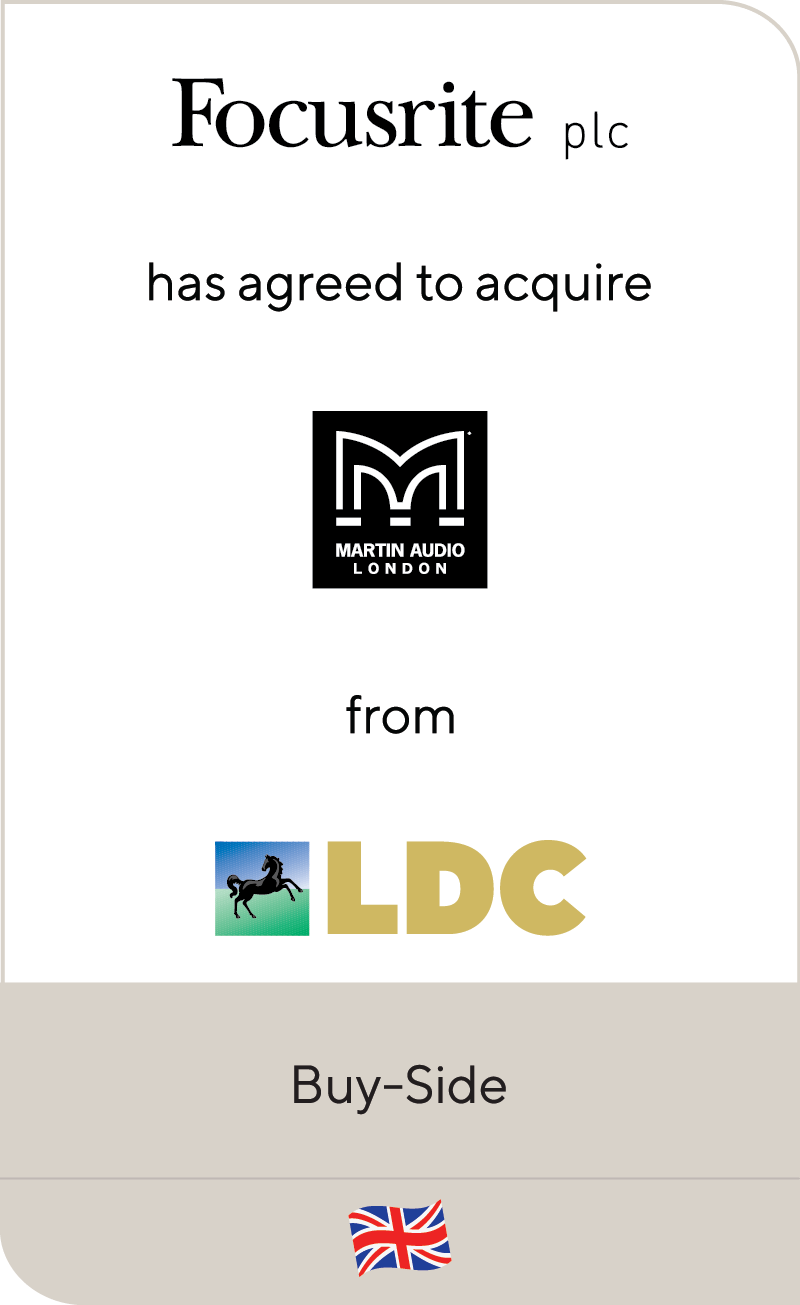Riding the Sound Waves – Key Trends in the Audio Industry
Jul 2023
| The audio equipment industry, a sub-sector of the $263 billion global professional audio/visual (AV) market, is a large, diversified and resilient sector that is projected to grow significantly over coming years. It includes segments such as consumer, professional and commercial audio.
As a result, private equity (PE) continues to be interested in the market and is investing in key themes that are driving its expansion, such as prosumerization and the drive to quality. In the below perspective, Lincoln International explores the key trends, mergers and acquisitions (M&A) market dynamics and advice for industry players on attracting investors to the market. |
Summary
-
Lincoln International explores the key trends, M&A market dynamics and advice for industry players on attracting investors.
- Click here to download a printable version of this perspective.
- Sign up to receive Lincoln's perspectives
Key Market Trends Driving Growth
Creator Market and Prosumerization
Younger generations are increasingly consuming online content via streaming, social media and mobile platforms. A large portion of this content is created by influencers, bloggers and artists (both professional and amateurs) at home, driving the convergence of professional and consumer audio markets.
At-home content creation received a large boost during COVID-19. For many during the pandemic, creating content at home was not only a passion, but a way to generate income while lockdowns were ongoing. As such, more people began podcasting, live streaming, sharing videos, including from gaming, usually starting with basic equipment, but then upgrading to higher-quality equipment as they began generating revenue.
The continuing demand for equipment that supports at-home content creation has driven companies to develop user friendly quality equipment including mixers, microphones, ring lights, cameras, headphones, controllers, musical instruments and more that help creators produce professional-style content outside of a studio.
While the COVID-19 pandemic is largely behind us and the world has reopened, this trend continues, and individuals continue to create content at home with relatively sophisticated set-ups.
Re-opening of Live Events
The live event market has bounced back strongly after COVID-19 lockdowns largely shut it down for an extended period. The global live music market in 2023 is expected to be worth $39 billion (above pre-COVID levels) as consumers are again enjoying live events and artists find that tours can contribute as much as 90% of their commercial revenue. Both artists and concert attendees are after the highest quality user experience, which requires high-end equipment, driving significant interest in a market which has seen product providers, such as rental companies, dispose of old inventory during the COVID period. The Glastonbury music festival in the UK is a good recent example of a live event showcasing the very best in audio equipment to deliver the ultimate consumer experience.
Appreciation of Quality: Fixed Install
1. At home
Consumers are spending more time at home, not least due to the endurance of working from home patterns, and those with good levels of disposable income are investing in their home audio or cinema set-ups. Corporates are reacting to this, with Spotify upgrading their streaming quality to provide CD-quality audio streams that are audible only on better-quality audio equipment in line with previous moves by Apple Music.
2. The retail and out-of-home environment
As retailers and corporates work hard to lure employees and consumers back onto the high street and into offices, the need for a differentiated experience has never been higher. Providing a high-quality in-retail experience to set itself apart from online shopping requires investment in high-quality AV (including digital signage) equipment to deliver an augmented experience. Likewise, good online conferencing set-ups and well equipped meeting rooms set the office experience apart from the home environment
This demand for quality is accelerating technological advancements and innovation, helping to propel premiumization across the market.
M&A Market Dynamics
Strategic market participants use M&A to align their portfolios to future requirements. Over recent years, we have seen strategics divesting portions of their portfolios to focus on specific end consumer segments such as Bose selling off its professional segment, Bose Pro, in April 2023 or QSC splitting its portfolio into two divisions. We have also seen the emergence of industry outsiders (e.g. hearing aid companies) investing in highly branded consumer audio businesses with great customer recognition, as was the case with Massimo acquiring Sound United for £750 million in February 2022 and Sonova acquiring the consumer electronics division of Sennheiser for £175 million in May 2021. Strategics also continue to invest to augment and extent the use case, capabilities and reach of their product portfolio, such as Audiotonix’ June 2023 acquisition of AI based processing solutions business sonible, following their April 2023 acquisition of US based console and music production software manufacturer Harrison.
PE is attracted to the industry because of its positive industry dynamics, large yet fragmented space and the many available future exit opportunities. As a result, they sit ready to deploy capital into audio equipment as well as related software companies that contain many of the below characteristics:
- A strong meaningful team
- Ability to innovate with a roadmap of exciting new product development
- Proprietary technology
- The right brand positioning
- Route-to-market expertise across business-to-business and/or business-to-consumer
- Strong margin opportunity
- Large and global end markets
- Multiple future growth avenues
- Clear exit strategy
Lincoln Perspective
While there has been a general reluctance to invest in the consumer sector given the current market uncertainty, there remains much to like and attract investors who can see through the temporary market distortions.
Business owners within the audio industry can use the current market situation to prepare for a successful future exit by:
Creating a business plan to evidence that the company’s goals are achievable and demonstrate the ability to navigate pressures, such as:
Involving a financial advisor, such as Lincoln, early on to:
|
We continue to be very active in the industry.
Recent Transactions
Contributors
Meet Professionals with Complementary Expertise in Consumer

It’s an exciting time to advise clients in the consumer sector. Major changes in consumer preferences and how products are purchased create a rich environment for business owners and investors to succeed.
Dirk Damegger
Managing Director & European Co-head of Consumer
Frankfurt
I have a hands-on approach and bring energy, creativity and passion to every client transaction.
Eddie Krule
Managing Director
ChicagoRelated Perspectives in Consumer

Lincoln International Managing Directors Recognized as Emerging Leaders
Lincoln International is pleased to share that The M&A Advisor named Managing Directors Adam Gifford, Brian Goodwin, Eddie Krule and Scott Molinaro as recipients in the Emerging Leaders Awards. These… Read More

Food & Beverage Market Update Q1 2024
The M&A market remained somewhat challenged during the first quarter; however, we experienced improved dealmaking conditions.

Consumer, Business and Economic Trends Align to Drive New Interest in Recommerce
Back in 2021, the recommerce industry seemed to have finally hit its stride, with the sector experiencing a surge in transactions, valuations and deal sizes. At the brink of becoming… Read More

The Fitness Investment Landscape
State of the Fitness Market: presented by L.E.K. Consulting Fitness Market Stabilization and Return to Growth Few industries were as negatively impacted by COVID-19 as the in-person fitness industry. Deemed… Read More


















